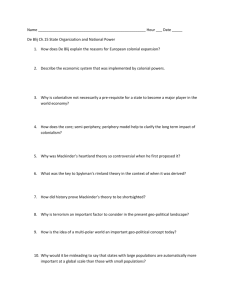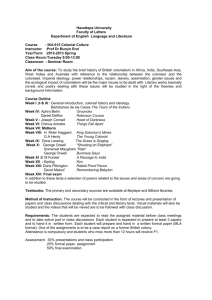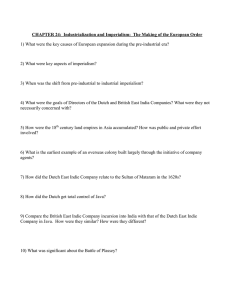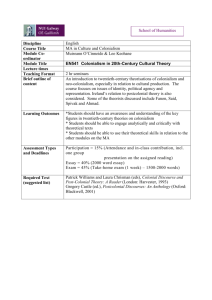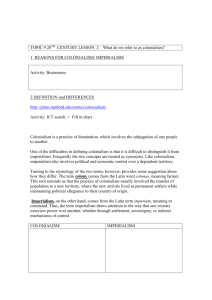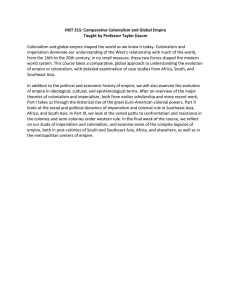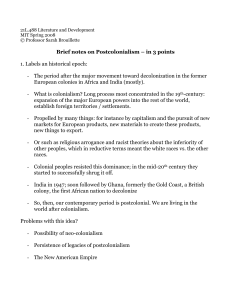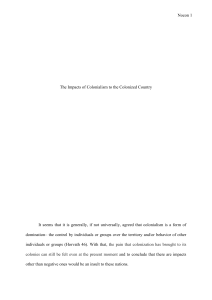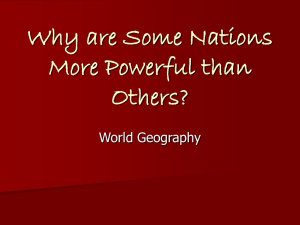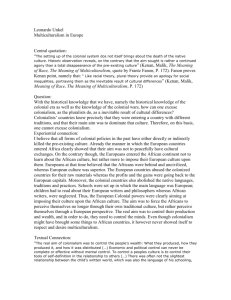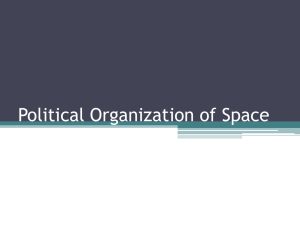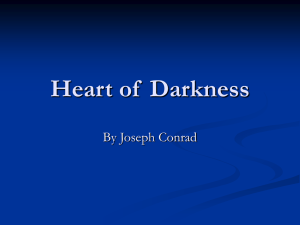9/17 - Andrew Spath
advertisement
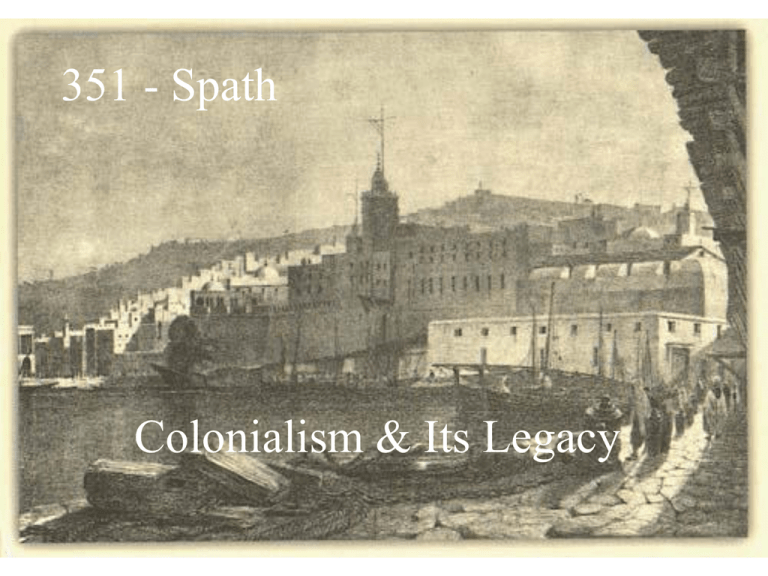
351 - Spath Colonialism & Its Legacy The Ottoman Empire What are we talking about? Imperialism and Colonialism both refer to the establishment of political and economic control by one state or empire over a foreign territory. But they are different. -- Colonialism - transfer of population to a new territory, where the new arrivals lived as permanent settlers while maintaining political allegiance to their country of origin. -- Imperialism – one country exercises power over another, whether through settlement, sovereignty, or indirect mechanisms of control. So colonialism is a kind of imperialism. Excerpt from Martin Ewan’s Afghanistan (p. 63): The main force…was ordered to advance via Kandahar, with an immense train of 38,000 camp followers, 30,000 camels and a large herd of cattle. If there was one thing on which its British officers were clear, it was that they were going to have a comfortable campaign. One regiment took with it its pack of foxhounds, another employed two camels merely to carry its stock of cigars, junior officers were accompanied by as many as forty servants and one senior officer needed as many as sixty camels to carry his personal effects. In December 1838, thus encumbered, the 20,000-strong “Army of the Indus” set out on its invasion… 2 Paradoxes 1) Ancient region with longest history of human settlement only recently organizing into sovereign states 2) Justification of colonialism by European powers as venture to modernize and develop ‘backward’ people, but had opposite effect Methods of Management and Control Institutional Coercive Non-coercive What considerations went into drawing borders? British & French colonial styles in the MENA area British: French: • • • • • • • Business-like, realistic, calculated. Consistently readjusts to maintain maximum gains at lowest cost Main goal is preservation of overall empire, control of extractable resources and maintaining access to India Use of overwhelming force in beginning, then try to minimize need for costly action Use of “treaties” to diffuse crises and maintain critical advantages No attempt to destroy previous institutions and social structure Effective manipulation of elites to reduce cost of occupation • • • • • • Consistent reliance on force and coercion to subdue resistance Creation of a caste-like system with Europeans (mostly French) at top Main goal is to exploit land and indigenous labor Destruction of indigenous institutions, cultures and social structures Replacing the indigenous culture with awe of French culture without providing an empowering education Disregard for pre-existing elites Creation of faits accomplis (facts on the ground), and adopting an “all or nothing” attitude towards the colony Comparative Histories Colonial Experience in the Middle East varied greatly across time and space. - Compare with colonialism in other regions (Latin America and South America) - French and British competition (different outcomes: Fashoda Dispute in Sudan and Sykes-Picot) - Divergent paths of French colonies in Tunisia and Algeria - Other colonial powers - Some places never colonized - Lebanon, Israel, Jordan, and Palestinians * Hussein-McMahon correspondence * Sykes-Picot Agreement * Balfour Declaration Sykes-Picot agreement Effects of colonization On colonized -- Issues of identity -- stunted development and moves toward constitutional rule -- reform and opposition movements On colonizer -- economic benefits -- loss of moral superiority -- domestic political upheaval -- military and civilian losses after decolonization -- lasting hatred Decolonization Algeria Colonizer & colonized in colonial Algeria European colons (Pieds Noirs): The Muslims: • 1 million Europeans (1954) with Full rights • Controlled 98% of premium arable land • Owned large holdings or lived in the wealthy European Quarter • Almost all children had access to schooling • Average income for European farmer: 780,000 FF • 9 Million Muslims (1954) Subject to forced labor, detention without due process • Land could be seized and given to colons at any time (215 million acres between 1871 and 1919) • Were left with arid agricultural land • Most lived in slums or as impoverished farmers • One child in ten was given schooling, as much as 1 in 70 in some areas • Average income for Muslim farmer: 22,000 FF The MENA region
